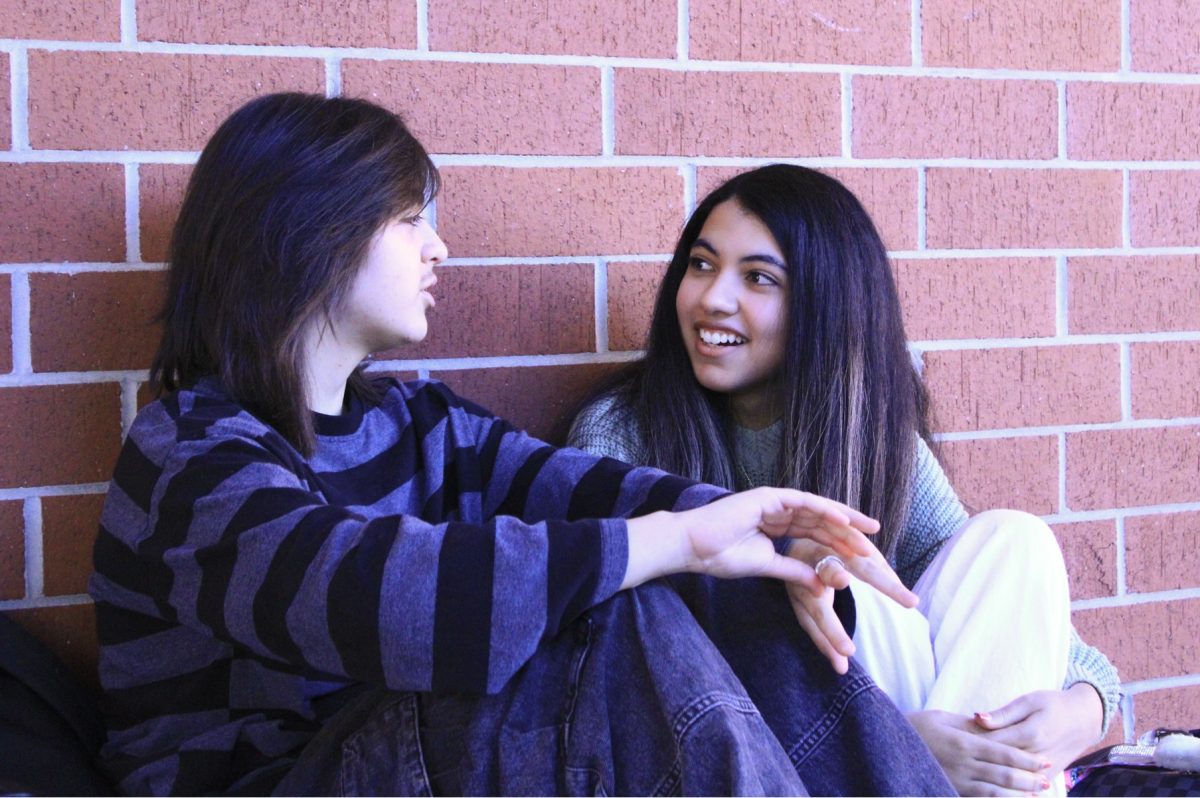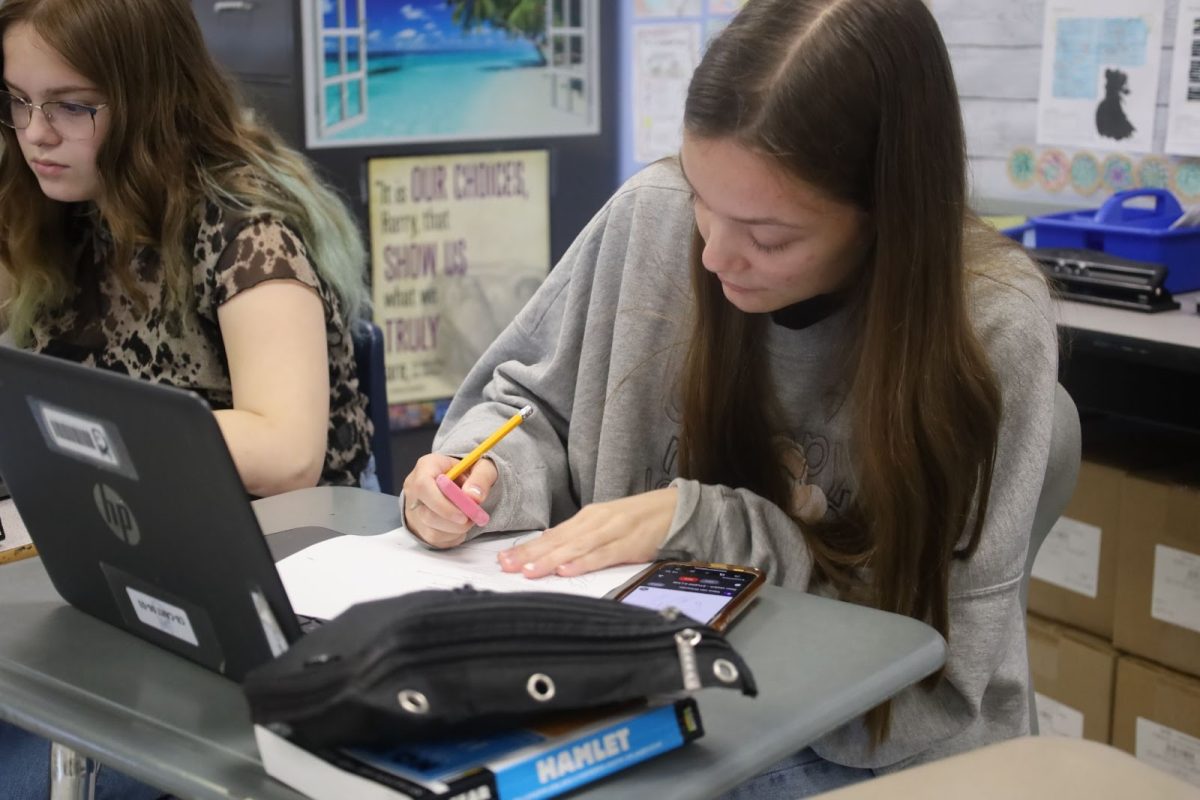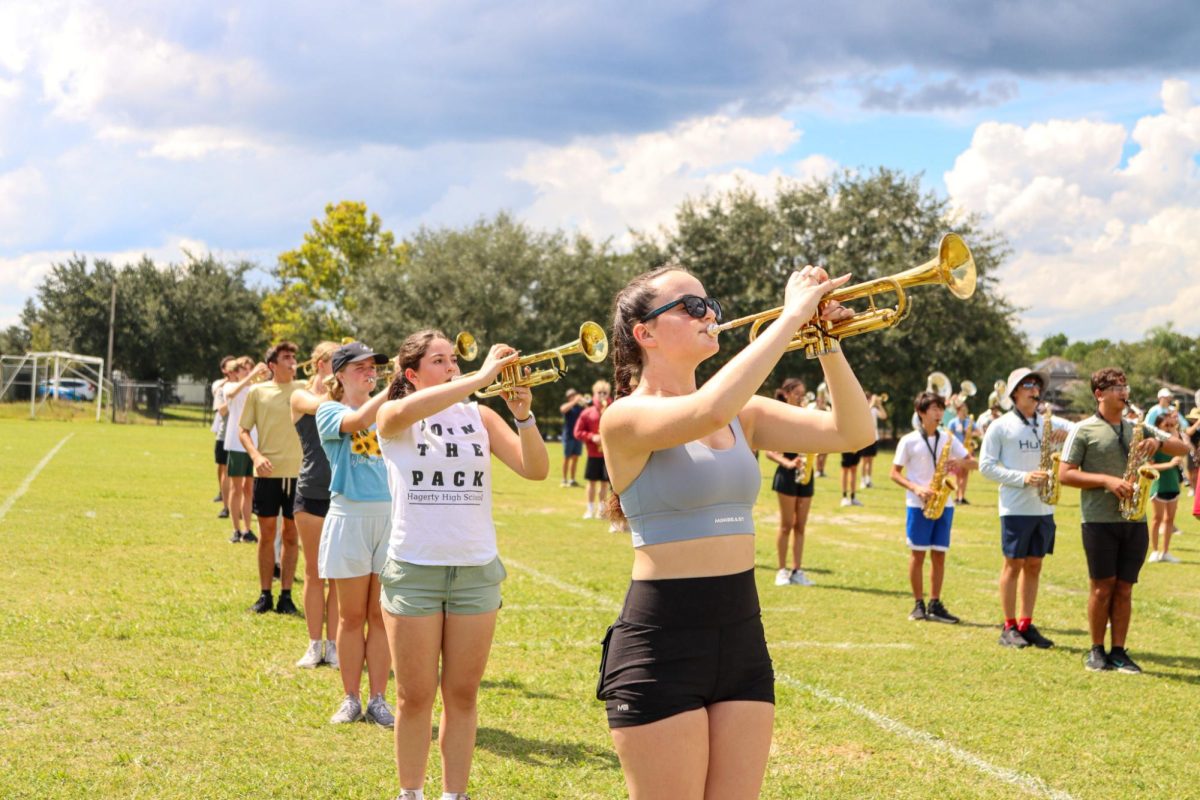For students whose first language isn’t English, the classroom is a place of constant negotiation. Not only are they navigating the journey of learning a new language, but balancing two worlds, one of their heritage, and one of a new form of communication. With 22% of all kids aged 5-17 speaking a different language at home, this experience is not uncommon. Faced with new grammar, vocabulary and sometimes alphabet, the challenge of taking on English as a second language proves a challenge.
“English is extremely different from my first language because it originates from Southern India,” senior Jason Joseph, whose first language is Malayalam, said. “There’s a lot of differences that made it difficult to learn.”
With the English alphabet containing 26 letters, and the Malayalam having 56, the transition into English at four years old was not easy for Joseph, who watched TV shows like Wild Kratts and Clifford to better understand it. This is a common technique used by non-English speakers to gain familiarity with the language, while others turn to language apps, books or even social media to better improve their speaking, reading and listening skills.
“Whether it’s YouTube, Instagram, anything, there’s a bunch of English language teachers that devote their whole channel to just teaching English,” ESOL teacher Casey Corrigan said.
Despite these useful habits available to English learners, adapting to new environments with an unfamiliar language still proves daunting. Because of this, ESOL programs are provided for students who are not proficient in English to aid in their language skills and better prepare them for the transition into English-speaking environments.
“Later in life, you might have a lot more responsibilities, and that can add stress. Because you have all these other things you have to think about, it can be harder to learn another language,” Corrigan said. “Taking a language class can give students extra support.”
Freshman Rachel Wong, who grew up in China speaking the Kunming dialect of Mandarin, was part of the 10.6% of students registered as English learners. For her, the journey of learning a new language at age six was not easy.
“I showed up to school with no English knowledge at all and had to learn in school,” said Wong. “I really struggled with grammar and pronunciation, and I was really different. It was hard for me to fit in, and it made me feel ashamed of my culture.”
For students like Wong, the stress of translating into an unfamiliar language on the spot can be overwhelming, leaving them stumbling between their two languages. Junior Kayla Rrapi shared a similar experience, growing up in an Albanian-speaking household while trying to learn English.
“I started learning English when I was really young. My mom and dad are from Albania, so when they moved here and had me, they still spoke Albanian in the house almost always, but they still wanted me to know English,” Rrapi said. “It’s hard. I’ll see an object and think of what it’s called in Albanian, but I can’t really think of the right words in English.”
The pressure students feel to adapt to their English-speaking environments can cause them to feel discouraged when they are unable to communicate with their peers, leaving them feeling isolated. For junior Priscilla Fajardo, whose native language is Spanish and began learning English at age two, communicating in a new language was a struggle, often leaving her unable to converse with her peers and teachers.
“I would have a hard time getting my point across and understanding other people’s thoughts because I couldn’t fully understand them,” Fajardo said. “I was really insecure about how I spoke English because I would slip up on a word to two. Even now I’ll mess up on words and get embarrassed, or I’ll struggle to understand what someone is telling me.”
Because of this dilemma, many students seek out others who speak their native language, giving them a sense of familiarity while in an English-speaking environment.
“It’s sometimes difficult to remember words or pronunciations, but most of my friends speak Spanish as well so they can usually fill in my blanks,” Fajardo said.
Being able to converse in their native language not only allows these students to talk without the fear of a language barrier but also relate to each other through their shared culture.
“At school, one of my best friends is also Albanian. It’s good to have someone outside of my home who I can talk to and relate with,” Rrapi said. “I can talk with her about things other people wouldn’t understand culturally.”
Despite this, not all students are able to find others beside their family who speak the same language. Because of this, many students grow out of touch with their first language, becoming more accustomed to English and slowly forgetting vocabulary, words and nuances.
“When I was growing up, and only using Albanian at home, I was really good at speaking it. Being around a lot of people who only speak English, it’s hard to keep the language fluent, and sometimes I catch myself forgetting words in Albanian, which is pretty upsetting,” Rrapi said. “Sometimes I forget about certain grammar things, or It’s hard to keep up with how fast my family talks.”
To combat this, many bilingual students make sure to stay in touch with their family and friends who share their native language, taking part in staying connected to both their language and heritage.
“I call my relatives every day and talk to them in Chinese…I think it keeps a part of me in China where my roots are,” Wong said. “I think it’s really important to keep my culture with me at all times, especially in a predominantly white area.”
The journey bilingual students go through is one of both strength and pride, navigating between the challenges of learning a new language often at a young age, and adapting to unfamiliar environments. While it can present many struggles, students are given the opportunity of mastering a second language, while also staying connected to their family, language and roots.
“I am Puertorriqueña and my family is basically, if not completely from Puerto Rico and speak little English, so to me speaking Spanish shows my respect to my family and my culture, even if I can speak English well,” Fajardo said. “I hope to one day have children who will be open to and loving and learning our language and beautiful culture because it’s who we are, and there’s no need to hide it.”









